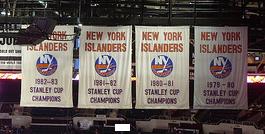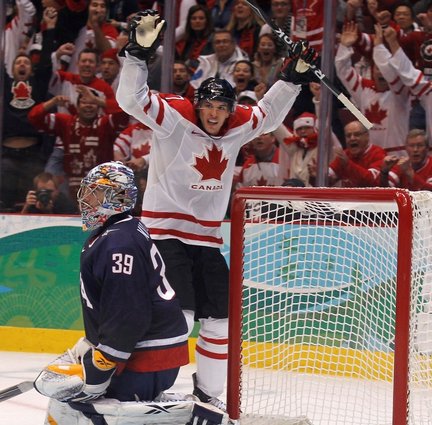Over the weekend I was able to catch up with an old hockey friend from Delaware and some of the Endeavor guys to watch the Flyers/Islanders game. The Flyers won, which means two things:
(this is when Anthony politely reminds me that he watched the Isles win 4 consecutive Stanley Cup championships before I was born!)

…damn it
This is my favorite time of year. Our off-season training group starts to trickle back in and the playoffs are starting. In our area, this is also the time that youth programs have their tryouts, which means this is an emotional time of year for youth players and parents. Some will finish the tryout process happy with how they played and the team they’re on for the following year; others will be upset with getting cut and will blame “politics” (sometimes rightfully so) for their misfortune.
Getting cut is not an easy thing to go through. I know; I was cut from multiple teams going up through the youth ranks. Some of those years I thought I was clearly better than a handful of the kids that made it; other years I knew I could at least be competitive with those kids. I say this only to point out that I’m not unsympathetic to the players that draw the short straw. With that said, I think too many players let a bad tryout experience or bad interaction with a coach typecast them as a certain type of player, which usually has a negative effect on their confidence.
As I’ve said in the past, success at the youth level is great for confidence but inter-player comparisons at U-14 levels is somewhat of an apples-to-oranges comparisons. For any given development situation, the kids that mature faster are always going to stand out as “better”, but won’t necessarily maintain that advantage over the long haul. Regardless if you’re over-sized or under-sized, exceptionally skilled or new to the game, respected for your speed or known as the slow kid, until you get paid to play (and even through that point),
YOUR GOAL SHOULD ALWAYS BE CONTINUOUS IMPROVEMENT!
Making or getting cut from any specific team doesn’t change the goal. Either way, players should be looking for areas they can improve on and actively working to do so. This idea of continuous improvement is known as “kaizen”. Kaizen is a Japanese term that I heard Dr. Steven Norris mention in his USA Hockey American Development Model presentation on Long-Term Athlete Development. I first came across the word while listening to a presentation from internet marketing expert Mark Joyner, and it’s stuck with me ever since.
I think kaizen highlights something that most of the hockey world still views the wrong way. One of the things that really struck me about Dr. Norris’ ADM presentation is how similar his message was to Mike Boyle’s and Brian Burke’s, despite the three of them having little involvement with each other professionally. In youth hockey, there is an over-emphasis on labeling kids as either talented or un-talented at insanely young ages. I don’t mean insanely young like 4 (although this is insane); I mean insanely young like 14.
The message that this practice sends is that certain kids were blessed with some sort of hockey playing magic and have a real shot at playing higher level hockey, and the others weren’t and really don’t stand a chance of making it anywhere.
“A person can succeed at almost anything for which they have unlimited enthusiasm.”- Charles M. Schwab
Yet, there are countless athletes that defy these odds ALL the time, to the point that it’s hard to consider it defying the odds at all. In fact, the idea that “talent” even exists has been rightfully questioned. Our belief in the concept of talent is what perpetrates it, and the “star” athletes that we think have natural ability almost always have SICK work ethics and put in incredible amounts of time away from the spotlight.

Natural talent? Crosby is recognized by everyone that crosses his path for being one of the hardest working hockey players in the history of the sport.
You’d be amazed at how much better “untalented” players get when they start practicing on their skills sets regularly under the supervision of a coach that understands how to introduce appropriate skill progressions. Coming back to the Boyle, Burke, Norris trifecta, an underlying message to all of their presentations is that we need to stop viewing youth hockey players through an NHL scouting eye, and start encouraging them to have fun and improve constantly.
Whether you made the team you wanted or not, your focus should be on kaizen. Development is a marathon, not a sprint. The players that continually take steps in the right direction are inevitably the ones that succeed over the long-run. The players that lean on their success at young ages inevitably fall victim to mediocrity at higher levels. We’ve had a dozen kids make NCAA Division I commitments over the last year, and they all did it the same way: Be patient, work hard, continually progress. That’s the formula; players need to stick to it, regardless if they make the peewee or bantam team they wanted or not!
To your success,
Kevin Neeld